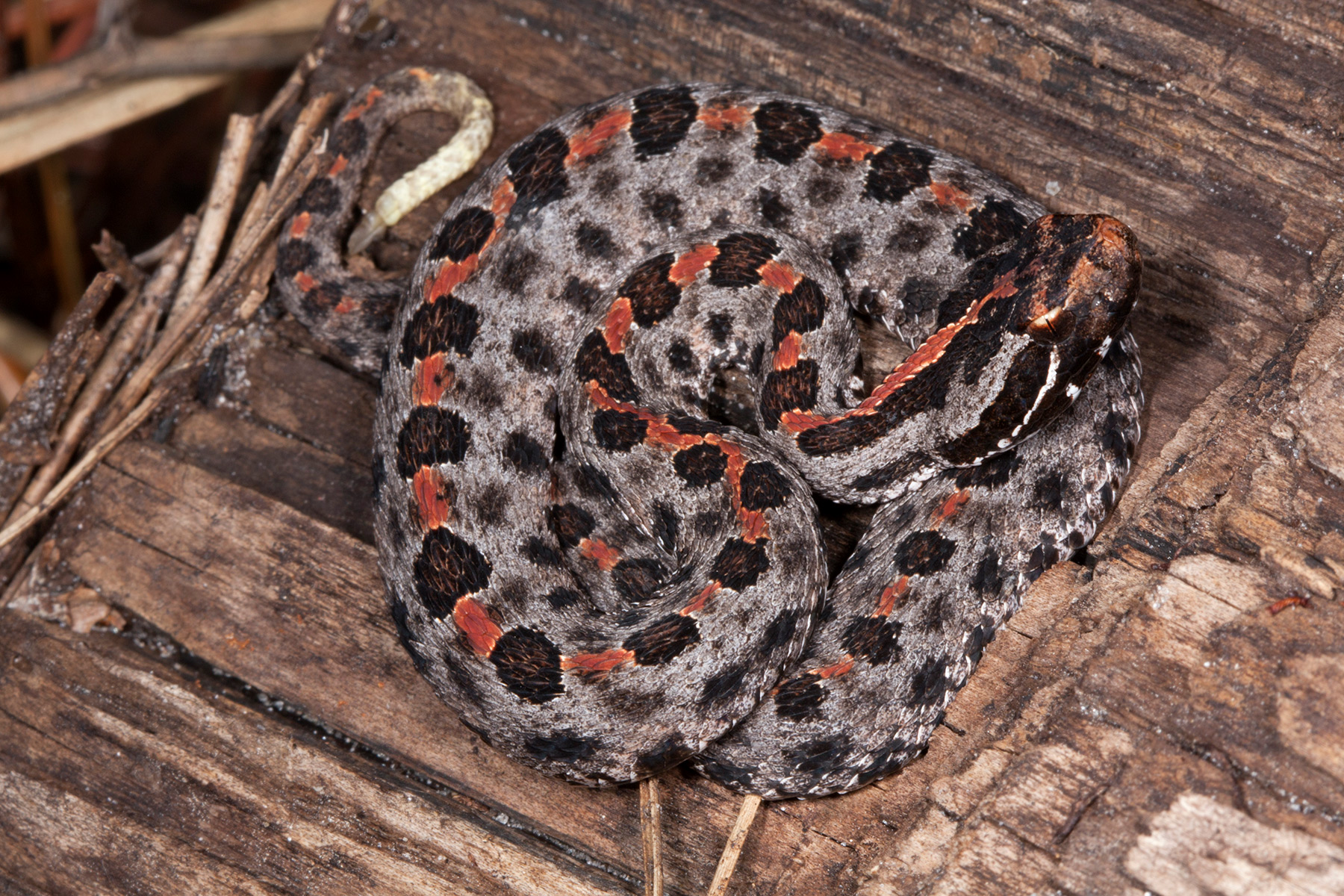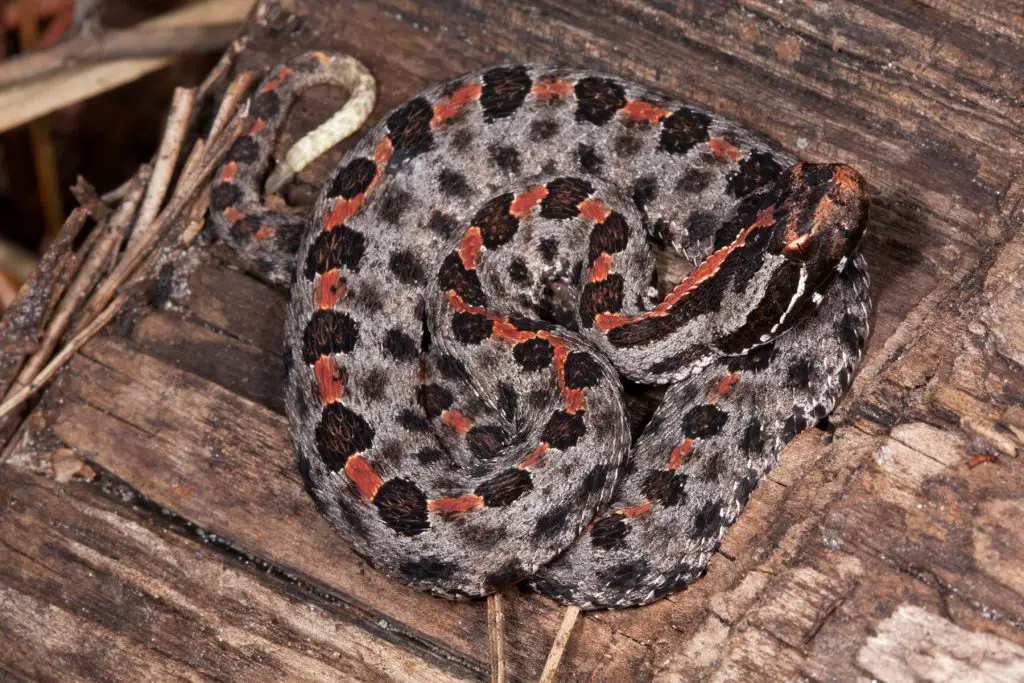Pygmy rattlesnakes are fascinating creatures that have been known to captivate many wildlife enthusiasts. These small, venomous serpents are native to North America, and despite their size, they pack a deadly punch.
Measuring between 1-2 feet in length, pygmy rattlesnakes are often confused with other species of snakes due to their size and appearance. In this article, we will explore the characteristics, habitat, and behavior of these elusive creatures, shedding light on why they are such a unique addition to our ecosystem.
A Pygmy Rattlesnake is a venomous snake species found in southeastern United States. They are small in size, usually less than two feet long, and have distinctive patterns on their bodies. Pygmy Rattlesnakes are known for their rattling sound, which they produce by shaking their tails. They mainly feed on rodents, lizards, and other small animals. If bitten, seek medical attention immediately.

What is a Pygmy Rattlesnake?
Pygmy rattlesnakes, scientifically known as Sistrurus miliarius, are small venomous snakes that are found in the southeastern parts of the United States. These snakes are known for their distinctive rattling sound, which they produce by shaking their tails. Despite their small size, pygmy rattlesnakes are dangerous and can deliver a painful and potentially deadly bite.
Physical Characteristics
Pygmy rattlesnakes are small snakes, with adults usually measuring between 15 to 24 inches in length. They have a distinctive pattern of dark brown or black bands that run the length of their bodies, with a lighter brown or tan background color. Their heads are triangular in shape and are wider than their necks. The most distinctive feature of the pygmy rattlesnake is its small, button-like rattle, which produces a buzzing sound when shaken.
Pygmy rattlesnakes are often confused with other small snakes, such as garter snakes or juvenile copperheads. However, pygmy rattlesnakes can be identified by their triangular-shaped heads, vertical pupils, and the presence of heat-sensing pits on either side of their heads.
Habitat and Behavior
Pygmy rattlesnakes are found in a variety of habitats, including pine forests, swamps, and marshes. They prefer areas with high humidity and are often found near water sources such as streams or ponds. These snakes are also known to climb trees and shrubs in search of prey.
Pygmy rattlesnakes are ambush predators, meaning they lie in wait for their prey to come within striking distance. They feed on a variety of small animals, including rodents, lizards, and frogs. These snakes are also known to eat other snakes, including other pygmy rattlesnakes.
Despite their venomous nature, pygmy rattlesnakes are generally not aggressive towards humans. They will only bite if they feel threatened or cornered. If you encounter a pygmy rattlesnake in the wild, it is best to give it a wide berth and allow it to move away on its own.
Benefits of Pygmy Rattlesnakes
While pygmy rattlesnakes are often feared and reviled, they play an important role in their ecosystems. As predators, they help control populations of small animals such as rodents and insects. They are also an important food source for larger predators such as birds of prey and larger snakes.
In addition, pygmy rattlesnake venom has been found to have potential medical benefits. Researchers are studying the venom’s potential use in treating heart disease, cancer, and other ailments.
Pygmy Rattlesnakes vs. Other Rattlesnakes
Pygmy rattlesnakes are often compared to other rattlesnake species, such as the eastern diamondback rattlesnake or the western diamondback rattlesnake. While these snakes share some similarities, they also have important differences.
One of the main differences is size. Pygmy rattlesnakes are much smaller than their diamondback cousins, with a maximum length of around two feet. They also have a different pattern of bands on their bodies, with thinner and more numerous bands than diamondback rattlesnakes.
In terms of venom, pygmy rattlesnake venom is less toxic than that of diamondback rattlesnakes. However, pygmy rattlesnakes can still deliver a painful and potentially deadly bite, especially to small children or people with compromised immune systems.
Pygmy Rattlesnake Bite Symptoms
If you are bitten by a pygmy rattlesnake, it is important to seek medical attention immediately. Symptoms of a bite can include pain, swelling, and discoloration at the site of the bite, as well as nausea, vomiting, and difficulty breathing.
In severe cases, pygmy rattlesnake bites can lead to tissue damage, organ failure, and even death. However, with prompt medical treatment, most people recover fully from pygmy rattlesnake bites.
Preventing Pygmy Rattlesnake Bites
The best way to avoid being bitten by a pygmy rattlesnake is to avoid them in the first place. When hiking or exploring in areas where pygmy rattlesnakes are known to live, it is important to wear long pants and sturdy boots to protect your legs and feet.
You should also watch where you step and avoid reaching into areas where snakes may be hiding, such as rock crevices or underbrush. If you encounter a pygmy rattlesnake, give it plenty of space and allow it to move away on its own.
Conclusion
Pygmy rattlesnakes may be small, but they are a force to be reckoned with. These venomous snakes play an important role in their ecosystems and are an important part of the food chain. While it is important to be aware of the potential dangers of pygmy rattlesnakes, it is also important to appreciate their unique beauty and the role they play in our natural world.
Frequently Asked Questions
What are the physical characteristics of a Pygmy Rattlesnake?
Pygmy Rattlesnakes are small venomous snakes that are typically 15-24 inches in length. They have a distinct pattern of alternating brown and beige blotches on their back and a triangular-shaped head. They also have a small rattle at the end of their tail that produces a buzzing sound when they feel threatened.
Where can I find Pygmy Rattlesnakes?
Pygmy Rattlesnakes are commonly found in the southeastern United States, particularly in Florida. They are typically found in wooded areas, near bodies of water, and in suburban areas where there is ample prey.
What do Pygmy Rattlesnakes eat?
Pygmy Rattlesnakes primarily feed on small rodents, lizards, and frogs. They are also known to occasionally eat other snakes.
Are Pygmy Rattlesnakes dangerous?
Yes, Pygmy Rattlesnakes are venomous and should be treated with caution. Their venom is not as potent as some other species of rattlesnakes, but it can still cause significant pain and swelling. If you encounter a Pygmy Rattlesnake, it is best to give it a wide berth.
What should I do if I am bitten by a Pygmy Rattlesnake?
If you are bitten by a Pygmy Rattlesnake, seek medical attention immediately. Do not try to suck out the venom or apply a tourniquet. If possible, keep the affected limb immobilized and below heart level. Remember, prevention is key, so be aware of your surroundings and take precautions when hiking or spending time in areas where Pygmy Rattlesnakes are known to live.
How Dangerous Is The Pygmy Rattlesnake?
In conclusion, the Pygmy Rattlesnake is a fascinating creature that is found in many regions of the United States. With their small size and unique coloration, they are often mistaken for harmless snakes. However, their venomous bites can be dangerous for humans and pets alike.
Despite their potential danger, Pygmy Rattlesnakes play an important role in their ecosystems. They help to control rodent populations and are a food source for many larger predators. It is important to respect these snakes and give them the space they need to thrive in their natural habitats.
Overall, the Pygmy Rattlesnake is a fascinating species that is worth learning more about. Whether you encounter one in the wild or simply want to appreciate their beauty from afar, these snakes are a vital part of our natural world. By understanding and respecting them, we can help to ensure their continued survival for generations to come.


